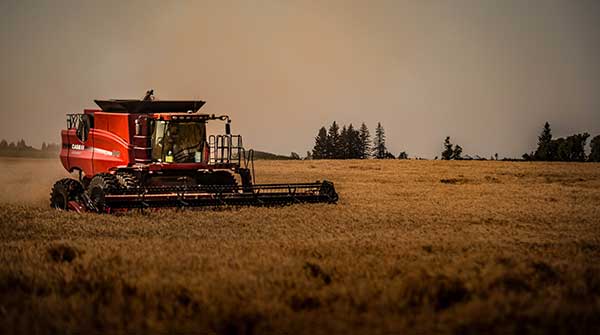 The Canadian Federation of Agriculture really set the bar high with its $2.6-billion aid request last week. When a federal program barely worth $252 million was announced, the disappointment felt throughout the farming community wasn’t surprising.
The Canadian Federation of Agriculture really set the bar high with its $2.6-billion aid request last week. When a federal program barely worth $252 million was announced, the disappointment felt throughout the farming community wasn’t surprising.
The funds were indeed underwhelming and won’t be enough to get some of those producers to stick around. Many will exit the industry, regrettably.
Before the announcement, we expected to lose as many as 15 percent of Canadian farms due to COVID-19. Ottawa’s plans won’t change that.
The $125-million program to support livestock raises a variety of concerns:
- Executing the program will take time, something producers don’t have.
- Few details were provided about the role of provinces or how much farmers will receive.
- The measures will likely not prevent more animals from being euthanized in days to come and killing farm animals for no reason is never a good thing. Along with the milk dumping, COVID-19 is clearly giving animal activists many great case studies served on a silver platter.
It’s all such a shame for our farmers.
Losing farms won’t compromise our nation’s food security, obviously. Farmland never disappears and can always be exploited by someone else.
The most significant concern is how we create jobs and wealth in rural economies located far from urban centres. This should be a priority for the federal government. Occupying our vast nation’s topography should be top of mind, from coast, to coast, to coast.
Is Trudeau government abandoning energy sector? by Niels Veldhuis and Elmira Aliakbari
The federal government has rarely bothered to show any evidence that it cared about rural communities – or agriculture, for that matter. But it should before it’s too late.
The help for agriculture was unsurprisingly slow. In the United States and Europe, governments provided financial aid directly to farmers weeks ago so they could deal with the aftermath of COVID-19.
In the U.S., every American is providing $86 through taxes to support agriculture via government-sanctioned programs. In Europe, it’s over $90 per capita. In Canada, the per capita support for agriculture is $6. Six tiny dollars.
Farmers have every right to be disappointed.
Prime Minister Justin Trudeau said this was a first step. We should hope it is for the sake of the sector.
There are interesting elements in the plan and the government should be credited for these:
- Recognizing that the Canadian Dairy Commission is the ideal agent to deal with production surplus.
- The $100-million credit to the Crown corporation responsible for making sure milk surpluses are managed properly.
- The $77 million allocated to expand domestic processing capacity.
The federal government has rarely recognize food processing as a worthy investment. The agri-food sector can’t be vigorous without a reliable, strong processing arm.
The Canadian processing sector, however, is incredibly anemic and in crisis. In fact, it was in a crisis when it entered the pandemic. The sector has lost 12 jobs a day, every day, since 2012. That’s 35,000 jobs but barely anyone has spoken about it.
Processing is the cornerstone for any food supply chain, although Canadians appear to have forgotten that over the years.
Weaknesses in processing will always arise in times of crises, like COVID-19, and this sector is desperate for more attention.
Ottawa presented a decent, measured plan, if too little too late. But it was wrong to expect so much from a government that’s obsessed with city-slicking ideas. Under its regime, pet shops have a greater chance of survival than some farmers.
But the program gives a sense of what needs to be improved over time. Food processing needs support to keep employees safe at work, and we need mechanisms to prevent spoilage at the farm gate. Those issues are both within the scope of the program, which is a good sign for the future.
Ottawa needs to make sure there are fewer divisions between the players in the food chain. Farmers should care about processors and vice versa. The same goes for the rest of the food chain. There are good examples in other parts of the world, so much work is still needed.
An urban-rural divide remains entrenched in most federal government policies, including this announcement.
However, knowing how that divide can skew everything, $252 million for farmers is a decent start. Expecting more was a mistake.
Dr. Sylvain Charlebois is senior director of the agri-food analytics lab and a professor in food distribution and policy at Dalhousie University.
Sylvain is a Troy Media contributor. Why aren’t you?
The views, opinions and positions expressed by columnists and contributors are the author’s alone. They do not inherently or expressly reflect the views, opinions and/or positions of our publication.


